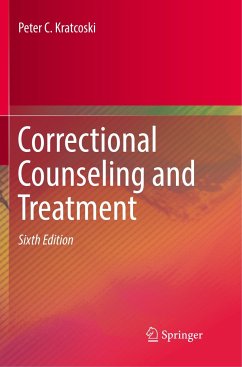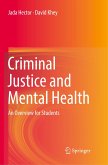This book provides a comprehensive overview of the methods used in the Criminal Justice system in the United States to counsel and treat offenders. It is aimed at advanced undergraduate and early graduate-level students for courses in Correctional Treatment or Rehabilitation, or Community Corrections more broadly.
The sections in the book provide:
- Aims and Scope of Correctional Counseling and Treatment
-Tools that Corrections Workers Use (including counseling and case management)
- Behavioral Modification Treatments: Examples and Applications
- Cognitive Therapies: Examples and Applications
Throughout the text, there is an emphasis on the big picture: the interaction of the correctional component of the justice system with other components, particularly courts (including special courts like family courts, drug courts, veterans courts and other programs).
Chapters in this book address the diverse population of correctional facilities, including juvenile offenders; those with mental illness, addiction and substance abuse problems, physical and mental disabilities; and homeless populations. The author also provides analysis of how legislation influences the corrections process.
This work is also enhanced by providing comparative analysis of the criminal and juvenile justice systems: their goals, objectives, and how these can affect counseling and treatment available within these two systems.
This pedagogical features of this engaging text include: excerpted interviews with correctional practitioners about the problems and challenges they encounter, discussion questions, classification instruments and real-world examples of specific treatments programs, and case studies that give students the chance to select the appropriate interviewing, counseling or treatment approach to deal with the problem/ issues of the case.
This work provides students with an overview of the methods usedfor Correctional Treatment and Counseling, and the tools to begin to think critically about how and when to apply these methods.
The sections in the book provide:
- Aims and Scope of Correctional Counseling and Treatment
-Tools that Corrections Workers Use (including counseling and case management)
- Behavioral Modification Treatments: Examples and Applications
- Cognitive Therapies: Examples and Applications
Throughout the text, there is an emphasis on the big picture: the interaction of the correctional component of the justice system with other components, particularly courts (including special courts like family courts, drug courts, veterans courts and other programs).
Chapters in this book address the diverse population of correctional facilities, including juvenile offenders; those with mental illness, addiction and substance abuse problems, physical and mental disabilities; and homeless populations. The author also provides analysis of how legislation influences the corrections process.
This work is also enhanced by providing comparative analysis of the criminal and juvenile justice systems: their goals, objectives, and how these can affect counseling and treatment available within these two systems.
This pedagogical features of this engaging text include: excerpted interviews with correctional practitioners about the problems and challenges they encounter, discussion questions, classification instruments and real-world examples of specific treatments programs, and case studies that give students the chance to select the appropriate interviewing, counseling or treatment approach to deal with the problem/ issues of the case.
This work provides students with an overview of the methods usedfor Correctional Treatment and Counseling, and the tools to begin to think critically about how and when to apply these methods.
"This book discusses treatment modalities that are used in correctional settings both community and institutional. ... This book is well written by experts in the field, and addresses both children and adults. It explores the major treatment modalities in corrections today. Students will benefit greatly from this book." (Gary B. Kaniuk, Doody's Book Reviews, September, 2017)








